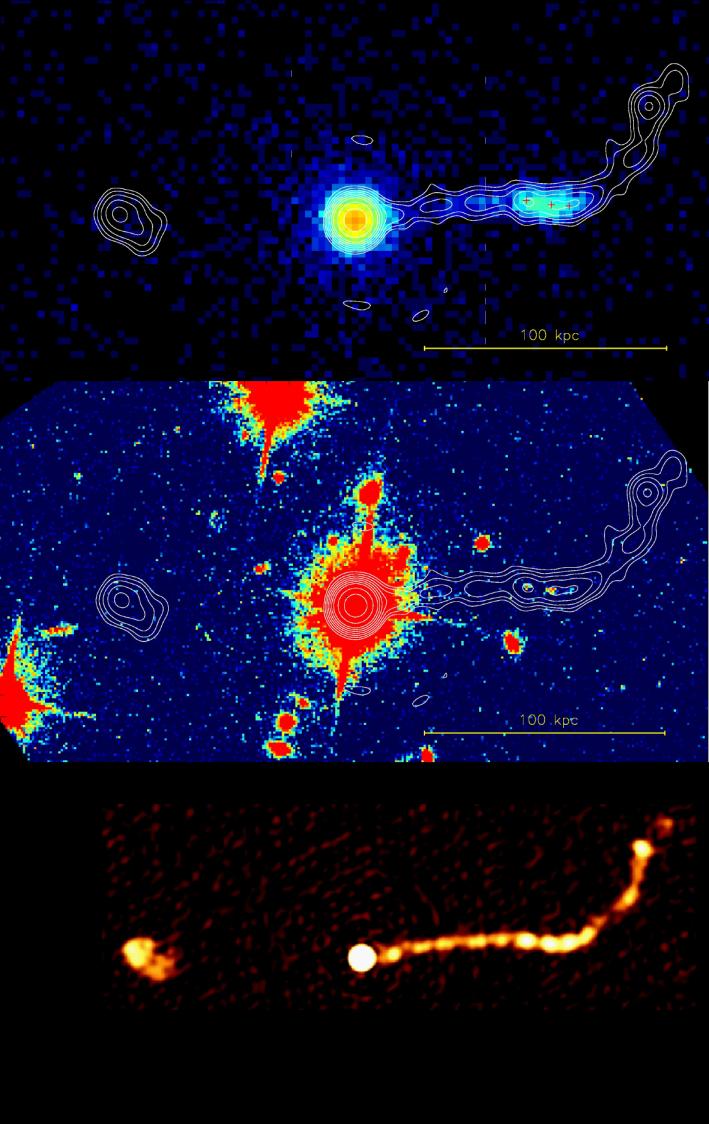The powerful jet in quasar PKS 0637-752

When the Chandra x-ray satellite was trained on one of its first objects, the Compact Array was performing simultaneous comparison observations. This triple of images shows the quasar PKS0637-752 - a bright distant galaxy in the southern sky. Quasars like this are fairly ``normal'' galaxies which contain an active and massive black hole at its centre: the brightness of the quasar is a result of material falling into the black hole. As well as the bright core of emission around the black hole, these images show a jet of material ejected from the black hole, which undergoes a remarkably sharp turn. The upper panel shows the x-ray image, with radio contours overlaid, whereas the middle panel shows an optical image, again with radio contours overlaid. The lower panel shows a radio image with finer detail (observed at a wavelength of 12mm).
The discovery of the x-ray jet is important because the power radiated
by the x-ray jet is much greater than that of the radio jet. Any theory
of jets must take into account the severe energy requirements imposed by
the size and power of the x-ray jet.
ATCA images by J. Lovell; X-ray image by Chandra; optical
image by HST.
Original: Bob Sault (1-Jan-2003)
Modified: Bob Sault (9-Sep-2004)
